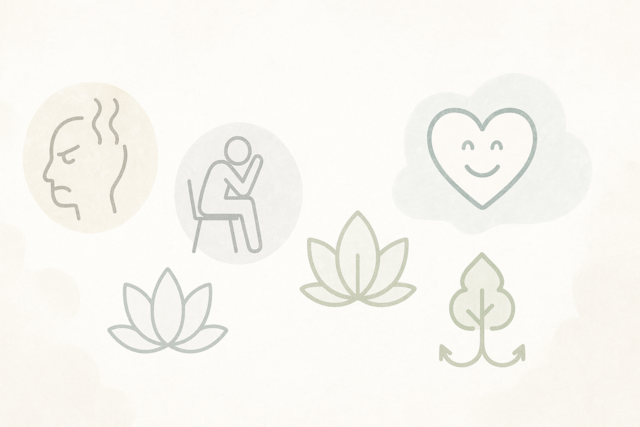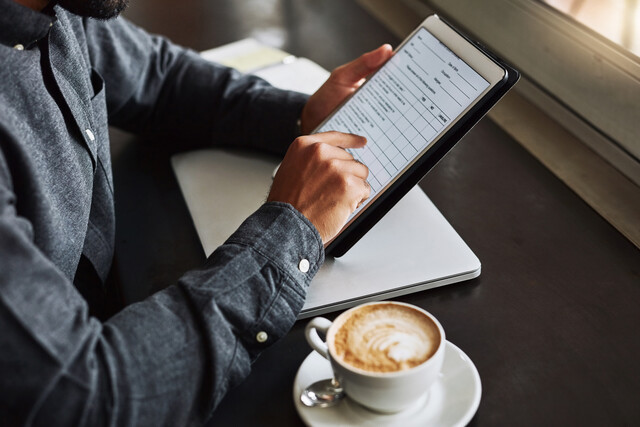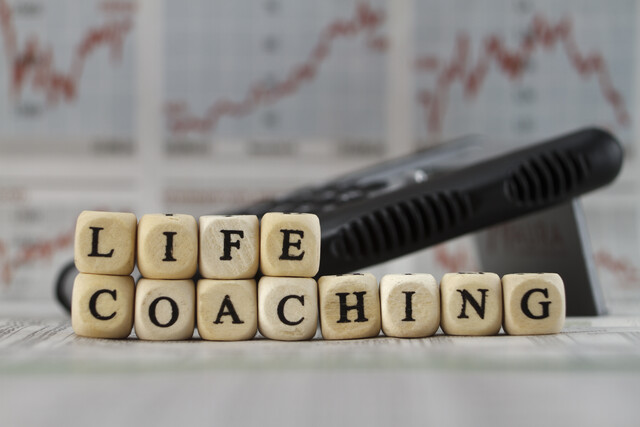We've talked a lot about how to learn and retain information that you are reading, studying, or hearing. We've also learned a lot of ways to memorize and recall information, like lists of words and numbers; but what about things you see? Can you remember details of the world around you easily? What about the things you see every day? Do you remember details of a room you were in, or a person you've met?
Why It's Important
Life is made rich in the details. It sounds trite, but it's true. What we remember about our lives is often made up of the details, and being able to take in and remember those details adds to our enjoyment. Visiting a park and noticing the many different birds singing in the trees, the effect of the wind rustling the leaves in the trees, the way the sunlight plays off of the side of a vendor's cart -- all add to the unique experience of the day.
But there are also concrete reasons to be able to recall visual details. One person, when asked what he noticed about his time in the waiting room before a job interview might say, "There were two other people waiting, and the secretary. he room had dark furniture and there was a coffee table with magazines. I think there was a water cooler."
But you could say, "Your mahogany furniture is nice, I especially liked the silver trim on the coffee table. There were four magazines to read, all pertaining to your industry, except one on travel. Two other people were in the waiting room. One was a tall man about my age, who is probably also going to interview with you; I noticed he had his resume with him. There was also a red-haired woman with a briefcase who checked her watch a lot. The receptionist was busy on the computer, but she took quite a few calls and also signed for a large package that was delivered by bike courier � I recognized the logo on the delivery person's jacket. The water cooler is about half empty; and I notice you can have either room temperature or cold water, which is nice."
If attention to detail or being observant are at all important for the job, guess who will impress the interviewer more?
We hope you'll never be the victim of a crime or even witness one, but if that ever happens, you'll be glad that you're able to recall details vividly and accurately. Police officers love taking information from witnesses who can quickly and accurately describe details, and relate the information clearly. You'll be surprised how often this information comes in handy even when no crime is involved � when giving driving directions to someone, describing a blind date to your best friend, or simply remembering a special occasion fondly.
But what else is great visual recall good for? It turns out that any number of professions rely on your ability to take in your surroundings and pay attention to the details: writers, journalists, police officers, private investigators, lawyers, teachers -- and the list goes on. There are many professions, and many situations, where the need to be detailed and specific will be important.
SCAD is about how you observe your surroundings. Generally, when you look at your surroundings, whether it is a room, a park, or your car, you easily become overwhelmed by details and get quickly caught up in "sensory overload." It doesn't help that you are usually distracted by other kinds of sensory input at the same time � people are talking, the radio's playing, the dog's barking, whatever. As you scan the space you're trying to remember, you probably quickly realize that there's too much to remember.
First, let's see what SCAD stands for:
| Skeleton
Chain Add Details |
The SCAD method breaks down the space you want to remember into discreet units, making it easier to remember the individual elements. The SCAD method uses a variation on the Chain system we learned earlier, but we're going to structure it a bit differently. You could say you're going to learn how to remember SCADs of details.
For the sake of this exercise, let's use your bedroom:
Skeleton:
The skeleton is the "backbone" of the scene � the major components around which the scene is built. In your bedroom, it would be items like the windows, your bed, dresser, computer, closet, chair, and bureau. Look around your room and take note of any items that would be the skeleton of the room.
Chain:
Now chain the elements of your skeleton together in the order in which you will most easily remember them. Make it logical for you. Would this be the way you'd reach them as you walk around the room from the door? The way you reach them when you get out of bed each morning? Remember, when you create a chain like this, the order must make sense to you.
Now go over these images a few times. It should be fairly easy to remember them, since they are visual and will be easy to fix in your mind.
Yours might look like this:
Door, bureau, computer, stereo, first window, bed, closet, chair, second window, dresser, computer.
Add:
It's time to add the remaining elements from your room � and you'll be surprised how many there really are! But be careful during this step, which is really going to be combined with the final step:
Details:
When you Add the Details, you do want them to be arranged in some kind of logical way, so they are easy to remember. Cluster the details around each skeleton item it is closest to. For instance,
|
Door: Calendar on wall Shoes in corner Bureau: Comb & brush Deodorant Framed photo Bus pass Bank card Computer: Papers Pencil holder Stack of books Scissors Cell phone Desk it's sitting on Stereo: CDs Remote control Ear buds 1st window: Curtains Hanging plant Bed: Comforter Pillows Cat Closet: Robe on hook Baseball cap on doorknob Chair: Sweats on floor 2nd window: Curtains Dresser: Loose change Wallet Coffee mug |
Now go back through the room you've been working on using the SCAD method and group the details around the skeleton items like we've done here in our hypothetical bedroom. Do you see how, when you go back through the space, it is easier to envision and remember those details, because they are connected to individual elements of the whole? It is similar to the chunking of numbers � it's always easier to remember things when we break them down into smaller units. By separating the many details of a scene and connecting them in a way that makes sense � in this case, we've connected them to whatever skeleton element they are nearest to � we make it easier to remember them.
Be Specific
There is one more thing that helps when you want to remember as much as possible about something you are looking at: Be specific. Don't simply tell yourself you want to remember "a large man at the park." Savor the details of the moment by specifically describing to yourself the visual image you're seeing, "A powerfully built man, well over six feet tall, who walked with a slight stoop. He was in the park on an overcast, windy day when there was a slight chill in the air." You will be much more likely to remember him if you imprint the second image on your mind, rather than the first!
Seeing something and really seeing something are truly two different things. Our eyes receive constant visual stimulus all day long, but how much of it truly registers with us? Almost none.Train yourself to really focus whenever you know that you may want to remember the scene or situation later. Don't simply let yourself be surrounded by the scene. Instead, interact with it, by using all of your senses. Touch objects as you look at them; listen to any sounds that might reinforce what you're seeing; and review what you're looking at in your mind by silently describing the scene to yourself. All of these actions will reinforce the images in your memory.
One of the most common admissions people have about their memory is that they have trouble remembering names -- and they are even worse at putting faces to names when they run into people they've only met once or twice.
Learning ways to remember names and faces more easily can come in handy for everything from casual meetings on the street, to business meetings. Wouldn't you love to impress your boss by remembering everyone you met at the last sales conference? Our tips will help you do just that.
The Basics of Remembering a Name
First and foremost, get the basics and be sure to keep the information straight. We've already mentioned that you can remember information easier by repeating it. For instance, when you are introduced to someone, you can say, "It's so nice to meet you, Miss James." Later in the conversation you can ask, "Miss James, how long have you worked here at Biscayne Pharmaceuticals?" Then, at the close of the conversation, you can use her name one more time, "It was a pleasure talking to you, Miss James."
But you should be asking yourself, "How does that help me put Miss James' name with her face?" Good question. It doesn't! It helps you remember her name, which is a good start; but you still need to connectthe name to the face. Some people are instinctively good at this, and others have a photographic memory; but most of us aren't this lucky. Most of us will see Miss James six weeks later and recognize her and fumble in our brains for her name. Or when we mention meeting a Miss James from Biscayne Pharmaceuticals, we won't be able to recall what she looked like.
Linking is the practice of creating an image in your mind that firmly attaches the name of the person and their face.
There are several ways you can link a name to the face of a person, including rhymes, imagery, and interests.
Rhymes
We've already discussed how powerful rhymes are at impressing information on our memory. If you are partial to music and tend to remember things better when you hear them, rhymes will probably work well for you.
Using rhymes to link a face to a name can be particularly powerful, because it links something memorable about the individual to his or her name. Simply devise a little rhyme or jingle in your head and repeat it a few times.You will be able to easily recall it months, or even years, from now, whenever you see the person again. Here are a few simple examples:
Doug LaRue is David's nephew.
Tina Hartley is very crafty.
Lynne Martindale is thin and pale.
You'll notice that each rhyme mentions a particular characteristic of the person, whether it's a physical trait (thin and pale) or something about their personality (Tina's crafting hobby) that would be stand out. Your rhyme should be something that makes them an individual.
For those who are more visually oriented, linking with images, rather than rhymes, may be best. To do this, think of the person's name in terms of imagery, then somehow link it to the person's face.
For instance, if you meet someone named Ray Clifford who has a rather prominent chin, how would you create an image that links his name to his face?
You could envision a ray of sun shining on the cliff made by his chin, with a Ford truck parked at the edge. It seems rather silly to picture a truck parked on his chin, but once you do, you'll have no problem remembering Ray Clifford's name or his face the next time you see him! The more outlandish an image is, the better you'll remember it!
Here are a few more examples:
If Barbara Thompson has wild, curly hair, you might picture it as barbed wire around Tommy's son. The words don't have to be exact. A close approximation will be enough to trigger your memory of the actual name. Try it and you'll see that it works!
Mr. Hampton might have a ham that weights a ton balanced on his head, since he's such a ham, always showing off. (Notice that this one not only uses imagery, but takes into consideration a personality trait, which is always a nice extra.)
Interests
Most of the time, when you meet someone, you learn a little bit about them. Perhaps your sister introduces you to someone at a party and says she's sure you two will have something to talk about, since you both love heavy metal music; or, your boss introduces you to the new regional manager and tells you he will be your new sales contact. For whatever reason, you'll learn a little bit about the person in the first few minutes you talk, unless you have no conversational skills at all.
If you learn something striking about the person's personal or business interests that you can link to their name, this can be just as effective as an image or a rhyme. It can also impress the person when you next meet them, because you'll have a way to start a conversation that shows you remember something specific and personal about them. Everyone likes to be remembered, and if you can say, "Hi, Jen, how's your work at the library coming along?" instead of just, "Hello, Jen," you will make a real impression.
Let's try a few:
Albert Lincoln works for the State Department of Public Works and spends his weekends fly fishing on the river behind his house.
You could picture him fly fishing, linking (Lincoln) his carefully tied fishing flies to his fly rod before going fishing.
Leslie Kauffman is a juggler in the circus.
Picture Leslie juggling in a lead coffin (Leslie Kauffman) wearing her circus costume.
Remember, when trying to remember names, the phrases you use to "match" with the names � such as "Salamander" and "Salomon" � don't have to be an exact rhyme, and don't have to match exactly. As long as they are relatively close, your brain will instinctively "fill in the blanks" and make the connection for you.
With every one of these methods, you remember to recall the face with the image, rhyme, or interest to imprint what the person looks like, along with the memory of the name of the person and any information about them.































